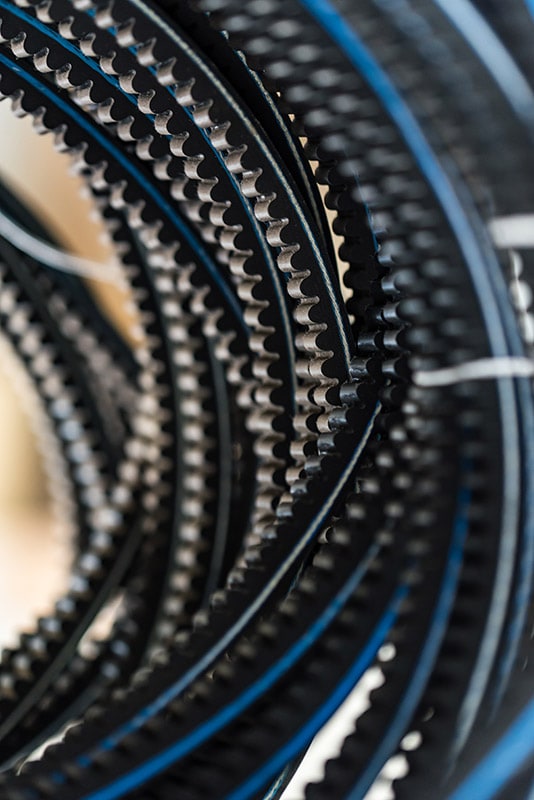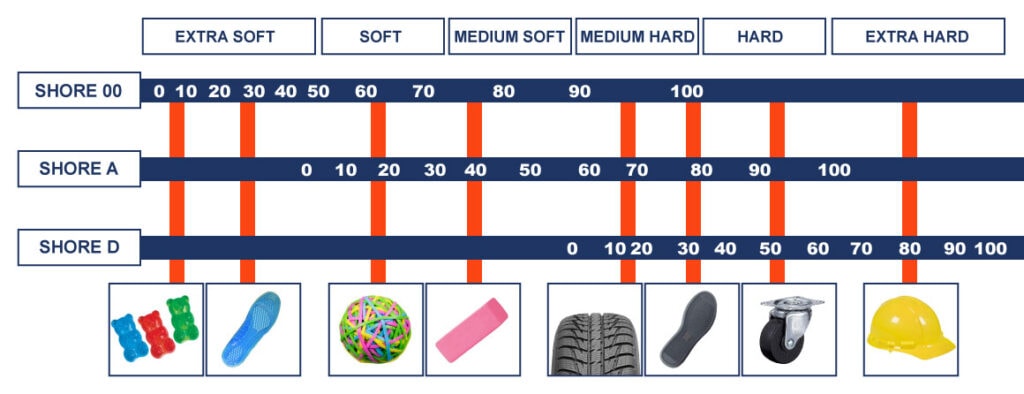Intro
There has been a lot of confusion when it comes to the durometer Shore hardness scale over the years. Some people think it’s a measure of how flexible a part is, and people don’t understand how important the topic is.
To help answer your questions, take a look at our guide about the durometer Shore hardness scale. We’ll cover this topic and explain everything that you need to know about it.
How is Material Hardness Measured?
When it comes to the hardness of different materials, a Shore hardness scale is typically used. Rather than using arbitrary descriptors to say how soft or hard a material is, you can use a value on a Shore scale.
This allows people to understand exactly what an object feels like without physically touching it.
The Different Scales
There are actually 12 different scales to measure durometer. However, most mold makers only deal with three of these: 00, A, and D.
Despite the scales being different, a lot of them span across the same range. For instance, a Shore hardness of 95 on the A scale is the same as a 45 on the D scale.
Shore 00 is the softest of the three. It’s reserved for very soft rubbers and gels like a gel shoe insole or gummy bear.
Shore A ranges from soft to extra hard. People use this scale mostly for flexible rubbers like rubber bands, pencil erasers, and tire treads. On the firmer end of this scale, you’ll find products like shopping cart wheels.
Shore D starts in the medium hard range and goes up to extra hard materials. Materials in this category are rubbers, hard plastics, and semi-rigid plastics. For example, a safety hardhat and a shoe’s rubber heel both fall under a Shore D scale.
barnwell.co.uk/shore-a-hardness/
Physically Testing for Durometer
The hardness of a material is simply how much resistance a material has when it comes to being indented. It doesn’t have to do with how squishy or flexible a material is (although these are both byproducts of indentation resilience).
So, how do you test a material for its durometer? You try to indent it.
Most people use a Shore Hardness Gauge for this test. It has a needle that’s connected to some sort of force gauge and spring. The needle is placed on top of the material you’re looking to test. The spring will depress the needle while the force gauge measures how much force is required to indent the material.
The less force required to indent the material, the lower the material’s durometer level is. For instance, a gummy bear on the Shore 00 scale will register a significantly lower indentation force than a safety hardhat on the Shore D scale.
The Importance of Shore Hardness to a Mold Maker

This idea is important when it comes to mass-producing products, especially when it’s a molded part. Higher durometers come with less flexibility than lower durometer materials.
Material selection is a big deal. If you’re making parts that are narrow and require flexibility, you’ll typically go with parts that are lower on the Shore hardness scale.
In addition, a mold maker will have to think about extracting the part from the mold. Again, parts that are higher on the Shore hardness scale would be harder to extract from a mold without breaking something.
This doesn’t mean that it’s impossible to use high durometer materials. They’re typically just reserved for flat options that don’t require a lot of flex. The mold life is typically longer for parts with a high Shore hardness.
This is largely thanks to the abrasion resistance you find in a 70A urethane rubber, for example.
Conclusion
Understanding the durometer Shore hardness scale is the first step to making the perfect mold. If you’d like to learn more about this topic or get started with a urethane casting today, reach out to our team at Rapid Axis. We have the experience required to deliver exceptional parts of varying Shore hardnesses.

